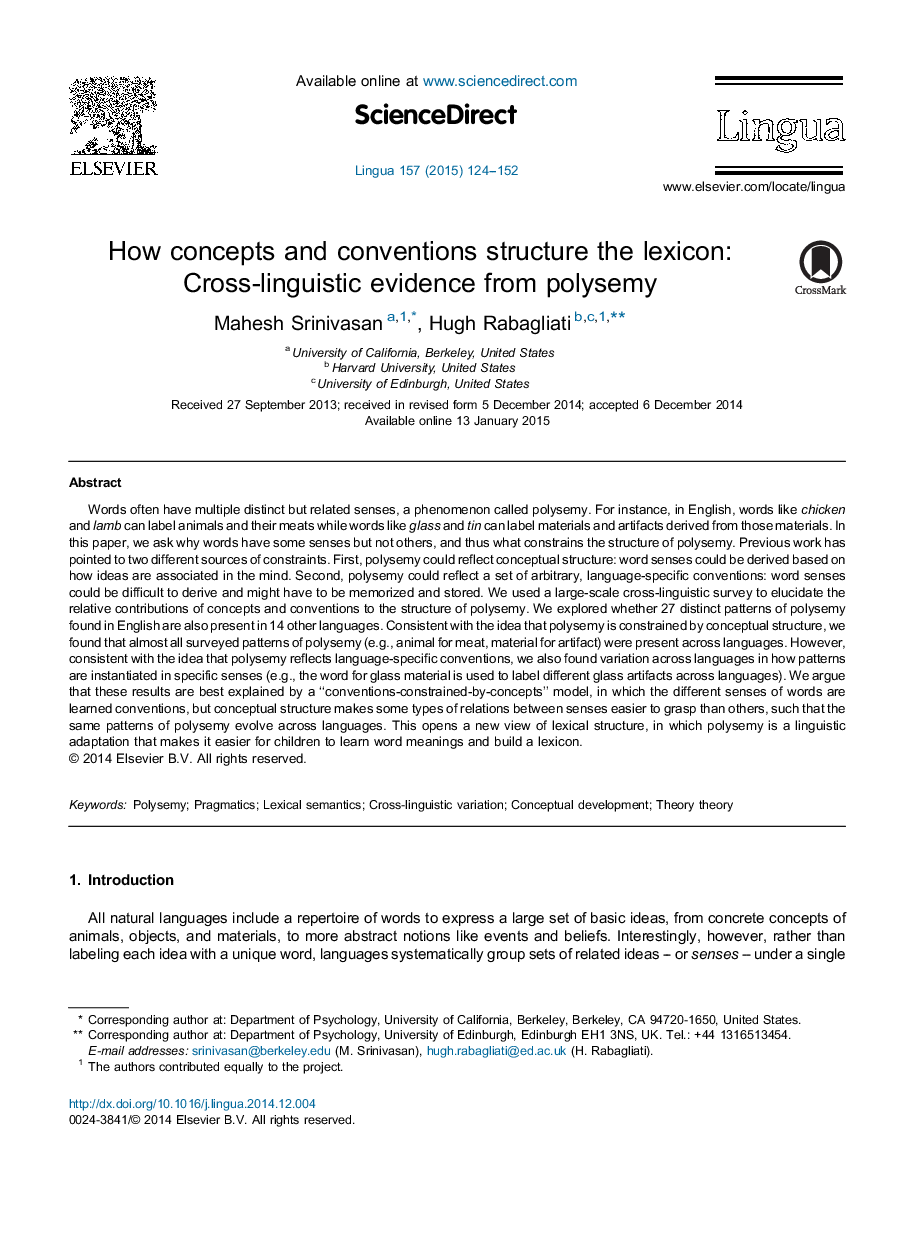| کد مقاله | کد نشریه | سال انتشار | مقاله انگلیسی | نسخه تمام متن |
|---|---|---|---|---|
| 935615 | 1475053 | 2015 | 29 صفحه PDF | دانلود رایگان |
• A large-scale survey explores polysemy across 15 languages.
• Almost all patterns of polysemy found in English were present across languages.
• However specific senses often varied across languages.
• This variation was predicted by a patterns’ generativity.
• We argue that polysemy results from an interaction of concepts and conventions.
Words often have multiple distinct but related senses, a phenomenon called polysemy. For instance, in English, words like chicken and lamb can label animals and their meats while words like glass and tin can label materials and artifacts derived from those materials. In this paper, we ask why words have some senses but not others, and thus what constrains the structure of polysemy. Previous work has pointed to two different sources of constraints. First, polysemy could reflect conceptual structure: word senses could be derived based on how ideas are associated in the mind. Second, polysemy could reflect a set of arbitrary, language-specific conventions: word senses could be difficult to derive and might have to be memorized and stored. We used a large-scale cross-linguistic survey to elucidate the relative contributions of concepts and conventions to the structure of polysemy. We explored whether 27 distinct patterns of polysemy found in English are also present in 14 other languages. Consistent with the idea that polysemy is constrained by conceptual structure, we found that almost all surveyed patterns of polysemy (e.g., animal for meat, material for artifact) were present across languages. However, consistent with the idea that polysemy reflects language-specific conventions, we also found variation across languages in how patterns are instantiated in specific senses (e.g., the word for glass material is used to label different glass artifacts across languages). We argue that these results are best explained by a “conventions-constrained-by-concepts” model, in which the different senses of words are learned conventions, but conceptual structure makes some types of relations between senses easier to grasp than others, such that the same patterns of polysemy evolve across languages. This opens a new view of lexical structure, in which polysemy is a linguistic adaptation that makes it easier for children to learn word meanings and build a lexicon.
Journal: Lingua - Volume 157, April 2015, Pages 124–152
